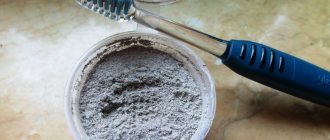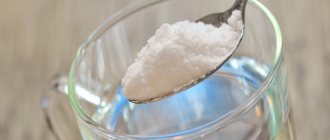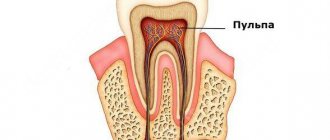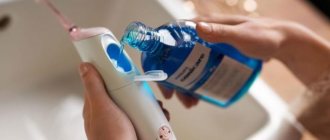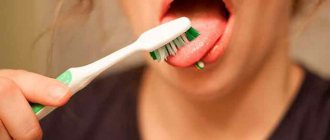Principle of operation
An irrigator is a device for caring for the oral cavity. During its operation, liquid under pressure enters the reservoir. And then the nozzle sets it in the desired direction - to those areas of the oral cavity that we cannot treat with a brush or dental floss. The liquid pulsates, thereby cleaning the teeth, including the spaces between them, the tongue, and the gums. If you use the irrigator for dental care correctly, your hygiene will be of the highest quality.
Experts also approve of the irrigator as a care device for dentures and orthodontic structures.
Is it allowed to leave liquid in the container after the procedure?
If the solution in the reservoir is not completely used up, it is usually tempting to leave it for next time so as not to waste time pouring a new one. You shouldn't do this. The fact is that it forms an excellent breeding ground for bacteria, including pathogenic ones, which, under suitable conditions, will begin to multiply rapidly, making subsequent manipulations with the use of waste filler harmful to the body.
After use, the tube must be rid of any remaining water by allowing it to run empty for a few seconds after drying. This is especially important for portable devices in cold weather conditions (for example, while traveling): when freezing, the liquid expands and can damage the fragile tube.
When to use an irrigator?
One of the most popular questions: how often can you use a waterpik? The answer is simple - every time after brushing your teeth.
But if you are a person who wears braces or has bridge structures, then you should use the irrigator more often - every time after eating. Because food gets stuck and remains in the mouth.
Another important rule is that you need to use the device constantly. And then it will really be the prevention of gum disease and effective hygiene of the entire cavity, which a toothbrush alone cannot provide.
Varieties
In order to satisfy the needs of device users, irrigators are produced in various configurations, with different specialized attachments. Irrigators are either stationary or portable. The stationary one can be installed in the bathroom, and the portable one can be taken with you on vacation or a business trip. There are models with the ability to adjust the mode and additional options, for example, with the generation of small bubbles for a softer and more effective cleansing. Some models of irrigators can be connected to a water supply, others operate from a built-in reservoir.
What to put in the irrigator?
What to put in the irrigator?
You can fill the irrigator with:
- The clean water we drink;
- Saline solution;
- Balms.
In this case, we use water at room temperature. If you use a irrigator with hot water, the device will quickly break down. And too cold water damages tooth enamel.
We do not recommend using a dental irrigator with herbal decoctions, as deposits form in the device and caring for it becomes difficult. You will have to clean the sediment often.
Dentists advise pouring balms, which have a number of advantages:
- Fight bacteria;
- Helps cope with inflammatory processes;
- Makes your breath fresh;
- Does not leave microparticles;
- Does not form foam or sediment.
Types of solutions
Conventionally, special solutions for the oral cavity are divided into three groups:
- Professional – liquids with a therapeutic effect for inpatient treatment (often high concentration). The drug is prescribed by a doctor for therapy or in the postoperative period.
- Household – for the treatment and prevention of dental diseases at home. The concentration of active components here is lower than that of professional ones; they are used for daily care.
- Homemade - herbal preparations of medicinal plants for the complex treatment of diseases of the oral cavity.
Based on the principle of action, solutions for irrigators are:
- Therapeutic - with fluoride and calcium to strengthen enamel and treat caries.
- Preventive – with beneficial elements for gums and teeth, they prevent possible pathologies, saturate the enamel with minerals, and destroy pathogenic microflora.
- Deodorants - with mint or menthol for everyday care, provide long-lasting fresh breath.
- Disinfectants – with antiseptics that destroy dangerous bacteria and are used to prevent dental diseases.
Which attachments will be useful for you?
Irrigator attachments
- Standard. Suitable for those who do not have any special diseases or installed structures in the mouth. These are nozzles without bristles. They look like bent tubes at an angle, they wash food well and cope with plaque. Typically, manufacturers offer 2 standard attachments in a set;
- Orthodontic. The same bent tubes at an angle, but with bristles. The best option for braces and other similar systems. The liquid paired with bristles cleans the interdental spaces well, removes plaque, and also takes care of braces;
- Periodontal. Needed for periodontal pockets. Thanks to the soft tip, when you use the irrigator to clean your teeth, it does not injure your hypersensitive gums. But such a nozzle cannot be maintained with high pressure, so that the tip does not fly off. The pressure in the nozzle itself is already calculated and high pressure is not needed here;
- Brush attachments for plaque. Accordingly, they help remove plaque on various structures. At the same time, the nozzle is not a replacement for a brush;
- Tongue attachments. They have the shape of a spoon, which allows you to effectively remove plaque from the tongue, cheeks, and palate;
- Brush attachments. That is, it is a toothbrush along with water under pressure. Cleans teeth and other structures well. You can use it every day, but do not replace a regular brush with this attachment;
- Nasal attachments. For cleaning the nasal cavity.
Watch the video from experts on how to choose nozzles for your irrigator.
The best anti-caries mouth rinses
President Classic Plus
The rinse contains sodium fluoride (250 ppm), xylitol and plant components (extracts of lemon balm, sage and chamomile). Protects tooth enamel from damage by caries and has a pronounced refreshing effect. It does not contain antiseptics or alcohol, so it is approved for use in children over 6 years of age and people whose profession involves driving vehicles.
Main advantages:
- pleasant aroma,
- soft taste,
- long lasting breath freshening.
Can I give a waterpik to a child?
Irrigator for children
Yes, children can also use an irrigator. But this needs to be done when there is a parent nearby and with minimal pressure. It is also important that the child has his own brush head, just like a toothbrush.
Before using an oral irrigator, watch our video with your child. This way, the baby will not be afraid of the device and will understand its benefits and operation together with you.
Can the device cause harm?
We found out what benefits the irrigator brings to the teeth and oral cavity, but can it cause harm?
There are practically no contraindications for use. But people with acute forms of gingivitis or periodontitis, as well as patients who have recently undergone dental surgery, for example, installation of an implant, can use this device only after complete recovery.
We advise you to use it in strict accordance with the instructions and recommendations of your doctor. This is the only way to achieve optimal results.
But keep in mind that if used daily for more than 15 minutes, it is possible not only to increase sensitivity, but also to cause bleeding gums. Thus, calling into question the usefulness of the irrigator - is it needed at all?
Please note that to cleanse the oral cavity, it is better to take at least plain boiled water. This will significantly reduce the risk of harmful bacteria entering the body from the water supply.
How to clean braces with an irrigator?
An irrigator complete with special attachments is the best device for caring for the orthodontic system. While wearing braces, it is correct to use the irrigator for cleaning as follows:
- Start brushing with the last teeth in the row;
- Take care of each brace separately, and clean the clasps and other parts of the system that are close to the teeth especially carefully;
- Finish the procedure with care between the teeth and gums.
And at the end, rinse your mouth with a balm-rinse or an antiseptic solution, since while wearing the systems, your lips and cheeks are usually inflamed.
Watch the video on how to clean braces with an irrigator and more. Do it correctly and regularly!
How to choose the cleaning mode and water pressure
When cleaning your mouth with an irrigator, you should not forget about the correct operating mode. First of all, this is the pressure of the water jet, which is adjusted with a special button or control knob. Even the simplest and cheapest models can work in two versions - strong and weak.
During the initial period of use, the gums may not react correctly to external influences. Therefore, at this stage, the minimum gentle regimen should be used. Gradually, the mucous membrane and the entire cavity will get used to this pressure, and after 1-2 weeks it will completely adapt to it. If there is no discomfort, you can gradually increase the power of the supplied jet.
Strong pressure does not always provide the desired result. If you have hypersensitivity or diseases of the mucous membrane, you should not use the maximum mode to avoid serious injury to the gums. If it is not possible to consult a dentist on this matter, it is recommended to rely on your own feelings.
The best rinses with teeth whitening effect
Whitening rinses prevent the appearance of enamel stains, plaque and tartar, and also help to gently brighten the surface. However, you shouldn’t expect the effect of professional whitening and a difference of 3-4 tones from them, of course.
Colgate Optic White – popular whitening rinse
Colgate Optic White removes plaque and stains on enamel, thereby restoring the natural whiteness of teeth. The effect is visible within a week after daily rinsing. The mint in the composition not only gives a pleasant taste to the product, but also destroys bacteria, freshening your breath. The feeling of cleanliness remains until the next meal.
The rinse aid is sold in white plastic bottles of 250 or 500 ml. The cap serves as a convenient dispenser. A volume of 500 ml when used twice a day is enough for about a month.
Pros:
- removes plaque and stains on teeth;
- eliminates unpleasant odor;
- does not sting when rinsing;
- low consumption;
- sold in most stores.
Minuses:
- short-lived whitening results;
- not recommended for sensitive teeth.
Colgate Optic White mouthwash is most effective when used with a toothpaste and brush from the same series.
Splat Active White – effective whitening rinse
Splat Active White is recommended for regular use after meals to maintain oral hygiene. It actively fights plaque and stains from dark drinks, and also freshens breath. The proprietary patented Luctatol system prevents the appearance of caries, blocking plaque deposition by 96%. However, the list of active ingredients here is quite extensive.
This is interesting: Pros and cons of the intra-canal tooth whitening method
Tetrasodium glutamate diacetate and the plant enzyme papain ensure the removal of pigmented plaque. Lactic enzymes and zinc ions create an antibacterial barrier, block the development of pathogenic flora and fight unpleasant odors. Licorice extract helps prevent caries. Biosol and thyme essential oil provide anti-inflammatory and antiseptic effects to prevent bleeding gums.
Pros:
- affordable price (about 150 rubles for 275 ml);
- pleasant taste;
- noticeable whitening effect;
- suitable for irrigators;
- prevention of bleeding gums.
Minuses:
- you need to keep it in your mouth for a whole minute;
- may cause allergies.
The rinse is recommended for use with Splat Professional “Whitening Plus” paste for maximum brightening results. The product is compatible with irrigators and is suitable for people with braces and other orthodontic structures.
The best plant-based mouth rinses
Forest balm
Mouthwash from the Forest Balm brand is intended for comprehensive maintenance of the oral cavity in a healthy condition. It will not solve serious problems, it is intended mainly for prevention. The product protects against caries and strengthens enamel due to a mineral complex with fluoride. The Russian concern Kalina produces Forest Balsam rinse in 13 versions, not all of them have a purely herbal composition. Some may contain fragrance, an organic solvent, or the antiseptic triclosan. When purchasing, you should pay attention to the components included in the product. Main advantages:
- pronounced effect,
- pleasant taste,
- affordable price.
Minuses:
- the composition is not 100% natural.
MEXIDOL dent Professional
Rinse aid made in Russia. The composition includes: anti-inflammatory component methylhydroxyperidine succinate (or Mexidol), licorice root extract, amino acid complex. Suitable for periodic use, prescribed to prevent the development of inflammatory processes for people prone to developing stomatitis and those who wear removable dentures. Main advantages:
- moisturizes the mucous membrane,
- heals wounds with stomatitis well.
Minuses:
- Recommended only for certain diseases.
Best lists
Let's determine the most effective mouth rinses by category:
- budget;
- anti-caries;
- for children.
Budget
Fluorodent is the most budget-friendly mouthwash option on our market. Its price ranges from 40 to 110 rubles. But still, this product has an antibacterial effect, strengthens enamel, whitens, and freshens breath. The structure of the rinse is based on a mixture of essential oils: lemon, mint, anise, clary sage.
mouth rinse Fluorodent.
Anticarious
Elmex “Protection against caries” copes well with its main task, but also has an antibacterial effect and strengthens the enamel. The cost of the product is generally 600 rubles.
Elmex mouth rinse Protection against caries.
For children
Drakosha is an excellent representative of a baby mouthwash. You can purchase it for up to 100 rubles. It is absolutely safe for your children, but it is better to make sure that the child does not swallow this liquid.
Drakosha mouth rinse.
